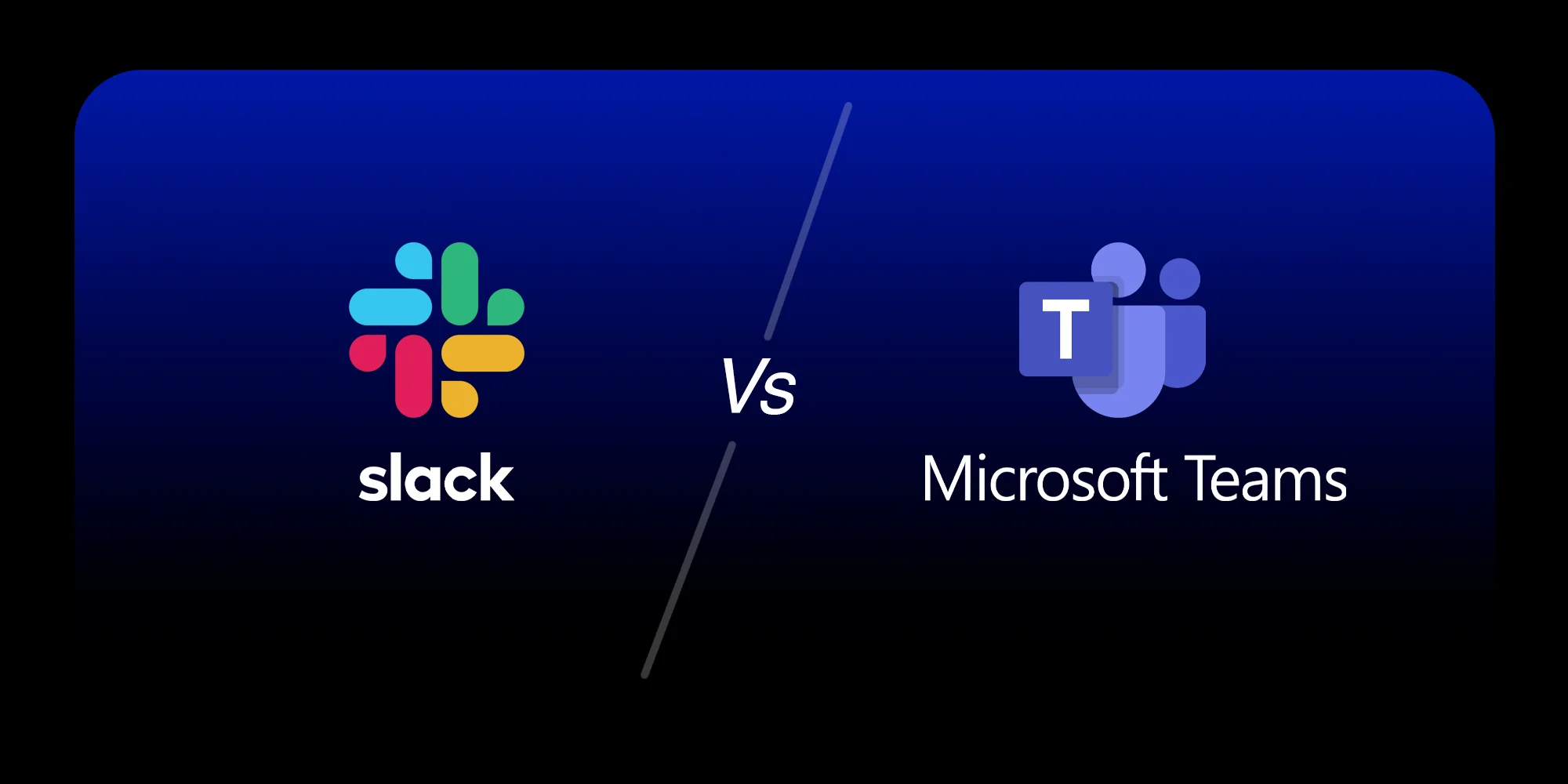Introduction
In a world where hybrid and remote work are the norm, digital collaboration tools are no longer optional—they’re mission-critical. Among the top contenders in this space are Slack and Microsoft Teams, two platforms that have redefined how teams communicate, collaborate, and stay productive.
If you’re a decision-maker evaluating which platform to invest in, this deep dive into Slack vs Microsoft Teams will help you weigh the options based on real business needs, integrations, usability, pricing, and overall ecosystem compatibility. We’re not just comparing features—we’re helping you determine which platform is the right strategic fit for your organization.
Slack and Microsoft Teams: A Quick Overview
Before we go deep, let’s set the stage.
- Slack: A trailblazer in the modern messaging space, Slack is known for its clean interface, real-time messaging, and extensive third-party app integrations. It’s popular with startups, tech companies, and agile teams seeking flexibility to work from home and a developer-friendly environment.
- Microsoft Teams: A collaboration platform deeply embedded in the Microsoft 365 ecosystem. Teams combines chat, video conferencing, file sharing, and tight integration with Office apps. It appeals to businesses already invested in Microsoft’s stack, especially enterprises and mid-sized companies.
Both platforms are capable, but the way they help various teams in the organization differs significantly.
User Interface & Ease of Adoption
- Slack is praised for its sleek, intuitive interface. Its layout is consistent across devices, and onboarding is simple, even for non-technical users. Channels are logically organized, and the search function is lightning-fast, making it easy to track conversations.
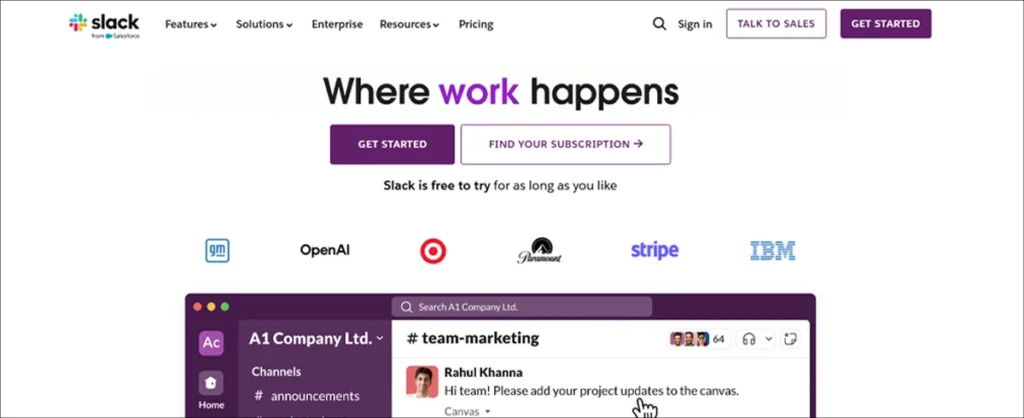
- Microsoft Teams has improved its interface significantly over time, but it still feels more structured and hierarchical. If your team is already familiar with Microsoft 365, Teams will feel like an extension of that experience. However, for new users, the layered navigation and tabs can have a steeper learning curve.

- Bottom line: Slack wins on ease of use and speed of onboarding. Teams provides a seamless experience for Microsoft-native users but may require more training for others.
Communication & Collaboration Features
Both platforms support threaded conversations, @mentions, file sharing, and video/audio calls. But they shine in different areas:
- Slack excels in real-time messaging. Its customizable notifications, emojis, bots, and reactions make conversations feel human. It’s ideal for fast-moving teams that thrive on quick communication.
- Microsoft Teams goes beyond messaging. The real strength lies in deep integration with tools like Word, Excel, PowerPoint, and OneDrive. Users can collaborate on documents directly inside the app—no switching windows required. Teams also supports larger video meetings natively and integrates with enterprise-grade telephony solutions.
- Bottom line: Slack is communication-first. Teams is an all-in-one productivity hub. Choose based on how deeply you want communication tied to your workflow.
Integration & App Ecosystem
- Slack supports over 2,000 integrations via its App Directory, including Google Drive, Salesforce, Trello, GitHub, and Zoom. Its open API also means custom apps and bots are easy to develop and deploy, which is a major plus for engineering-heavy teams.
- Microsoft Teams offers fewer third-party integrations, but what it lacks in quantity, it makes up for in depth. Its native tie-ins with the Microsoft ecosystem—SharePoint, Outlook, Azure DevOps, and Power Platform—are a game changer for productivity.
- Bottom line: Slack is better for open, multi-tool environments. Teams is ideal for businesses that live within Microsoft 365.
Video Calling & Meetings
- Slack introduced Huddles and has added basic video conferencing features, but it’s not meant to replace Zoom or Google Meet for complex video needs. It serves well for quick calls and team standups.
- Microsoft Teams, on the other hand, is built for robust video conferencing. Features like Together Mode, breakout rooms, whiteboards, meeting transcripts, and direct calendar scheduling from Outlook make it enterprise-ready.
- Bottom line: If video meetings are central to your workflow, Teams offers a more complete solution.
File Sharing & Document Collaboration
- Slack allows file sharing within channels and DMs, and while it integrates well with tools like Google Drive and Dropbox, collaboration usually happens in those external tools.

- Teams enables real-time co-authoring on Word, Excel, and PowerPoint files directly in the platform. With SharePoint and OneDrive at the backend, file storage and versioning are seamlessly handled.
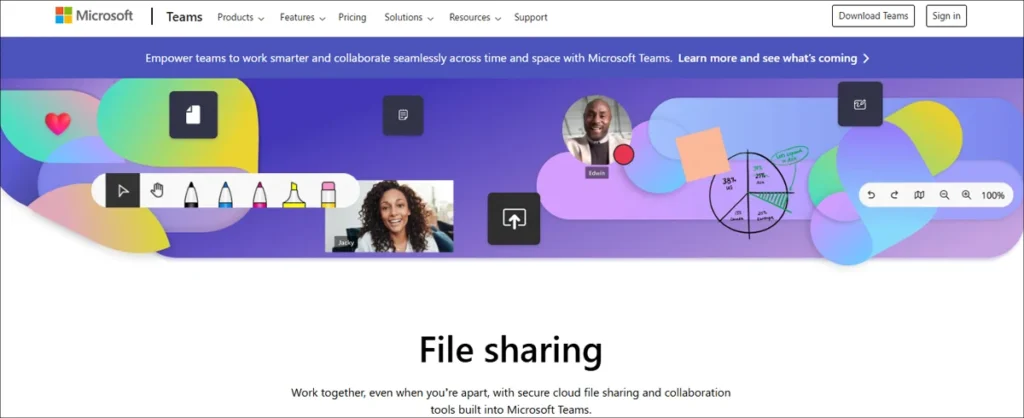
- Bottom line: Teams has the edge when it comes to document-heavy workflows.
Security & Compliance
Both Slack and Microsoft Teams offer enterprise-grade security features like two-factor authentication (2FA), single sign-on (SSO), data encryption, and audit logging. However, there are notable differences:
- Slack offers enterprise mobility management (EMM) and is SOC 2, ISO/IEC 27001, and GDPR compliant. Slack Enterprise Grid adds more advanced security controls.
- Microsoft Teams is backed by Microsoft’s security infrastructure. It provides granular controls, data loss prevention (DLP), eDiscovery, and is compliant with a wider range of standards (HIPAA, FedRAMP, etc.).
- Bottom line: Both platforms are secure, but Teams offers broader compliance for regulated industries.
Pricing & Licensing
- Slack offers a freemium model, with limited history and features in the free plan. Paid plans—Pro, Business+, and Enterprise Grid—are priced per user per month and vary based on features like SSO, analytics, and compliance tools.
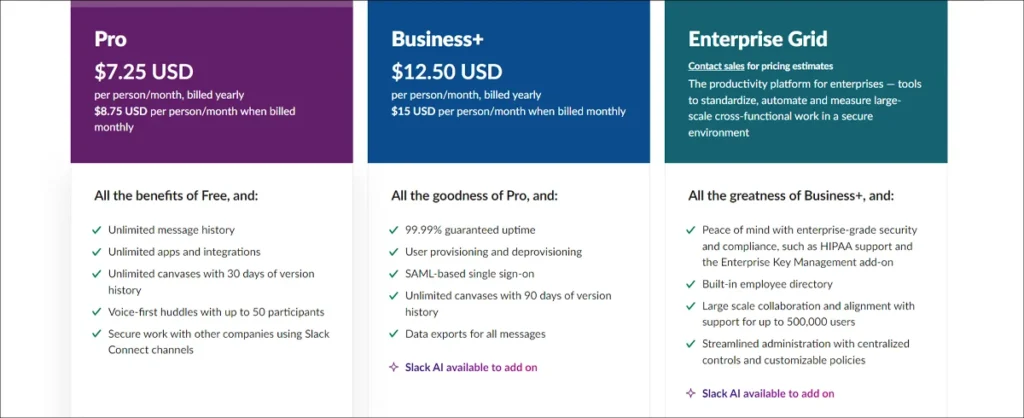
- Microsoft Teams is included in Microsoft 365 subscriptions, making it cost-effective for companies already using Word, Excel, Outlook, etc. Teams Essentials is available as a standalone product, but most features are unlocked with a Microsoft 365 Business or Enterprise plan.
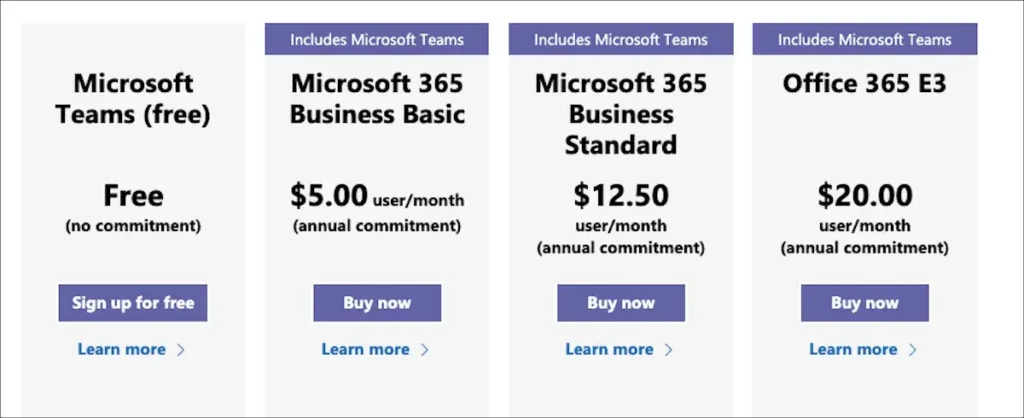
- Bottom line: If you’re already a Microsoft customer, Teams offers better value. For flexible startups, Slack may be more appealing, especially with its free-tier capabilities.
Support & Customization
- Slack has responsive email and chat support, with dedicated success managers for enterprise customers. Its developer community is active, and the UI is more customizable through themes and bot workflows.
- Microsoft Teams support comes via Microsoft’s extensive global network, with 24/7 enterprise support for Business and E5 plans. Customization is possible through Power Automate, but it typically requires more technical effort.
- Bottom line: Slack is easier to customize; Teams has more powerful enterprise support.
Real-World Use Cases
- Slack: A fast-growing fintech startup with distributed teams may choose Slack for its flexibility, ease of use, and API-first ecosystem.
- Teams: A mid-sized manufacturing company already using Microsoft 365 might benefit from Teams for its integration with SharePoint and centralized communication.
- Bottom line: The decision often comes down to the tools you already use and how integrated you want your collaboration platform to be.
Slack or Microsoft Teams?
| Feature |
Slack |
Microsoft Teams |
| User Interface |
Simple, intuitive, and highly customizable |
More structured with tighter integration |
| Best For |
Startups, tech teams, and agile workflows |
Enterprises and organizations on Microsoft 365 |
| Pricing |
Free tier available, paid plans start at a lower price |
Free tier available, better value with a 365 subscription |
| Messaging |
Organized by channels with threads |
Channel-based with threaded conversations |
| Video & Audio Calling |
Native calling and Huddles |
Integrated with Microsoft Teams Meetings |
| File Sharing & Collaboration |
Native tools, integrates with Google Drive |
Deep integration with OneDrive, SharePoint |
| App Integrations |
2,000+ integrations via Slack App Directory |
700+ integrations, focused on the Microsoft ecosystem |
| Security & Compliance |
Enterprise-grade with compliance add-ons |
Strong compliance features by default |
| Customization & Bots |
High flexibility for workflows and bots |
Limited flexibility compared to Slack |
| Support & Community |
Large developer community and active forums |
Extensive Microsoft documentation and support |
What’s Right for Your Team?
There’s no one-size-fits-all answer to the Slack vs Microsoft Teams debate. It comes down to how your team works, what tools you already use, and the level of integration you expect.
Choose Slack if your team values flexibility, user experience, and a wide-open ecosystem of integrations.
Choose Microsoft Teams if you’re embedded in the Microsoft world and want a centralized, secure platform for communication, file collaboration, and meetings.
At the bottom of the funnel, it’s time to think about implementation. Request demos, run a pilot program with each tool, and gather feedback from actual users before making the switch. The right collaboration platform can do more than keep your team connected—it can unlock productivity across your organization.
